I was in the middle of a narrow by-lane in the blue city of Jodhpur. In pursuit of a perfect frame filled with all shades of blue. Navy blue door, royal blue walls, cadet blue windows, azure blue sky and sky blue roof – imagine all shades of blue, and I was trying to capture them with my camera in Brahmapuri’s centuries-old quarters. My camera shutter was repeatedly pressed for a long time as I was shooting everything in burst mode.
Suddenly I noticed a black shadow encroaching from the corners, right inside my camera. Photos were showing an irregular thick black border in the LCD screen. I looked up but could not find anything black around. What the hell is it?? Then I realised the black thing is in the box. Yes, my camera revolted with so much pressing. The shutter curtain of my 4 months old lone DSLR got stuck. And the last thing I wanted in blue in the blue city of Jodhpur started beating all blue then.
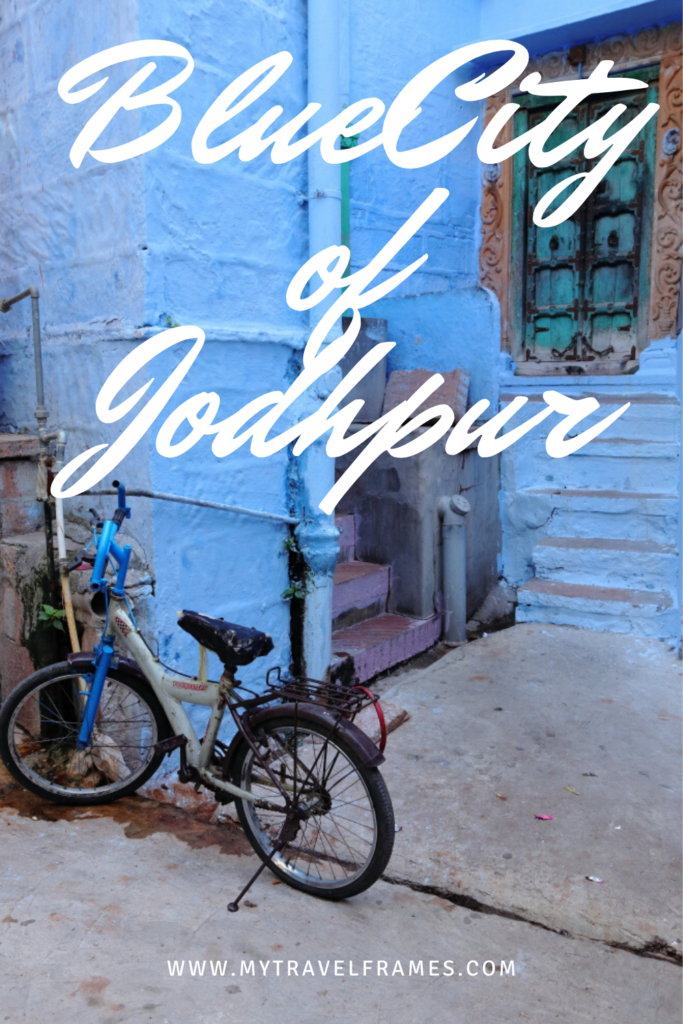
Table of Contents
Blue City of Jodhpur
Jodhpur is the second-largest city in the state of Rajasthan, located at the edge of the Thar Desert. The city was founded in 1459 by Rao Jodha, a Rajput chief of the Rathore Clan. Jodha conquered nearby places and formed the Kingdom of Marwar, the capital of which was initially Mandore from where Rao Jodha belonged. Later the capital was shifted to Jodhpur, as it was located on a more strategic position in the trade route.
The city expanded gradually around Mehrangarh Fort. As Jodhpur lies almost at the geographical centre of the state of Rajasthan, it became a convenient base for tourists to travel the entire state. The city of Jodhpur also has some important historical places to explore – Mehrangarh Fort, Jaswant Thada, Umaid Bhawan Palace, Mandore Garden and the Old Blue Town.
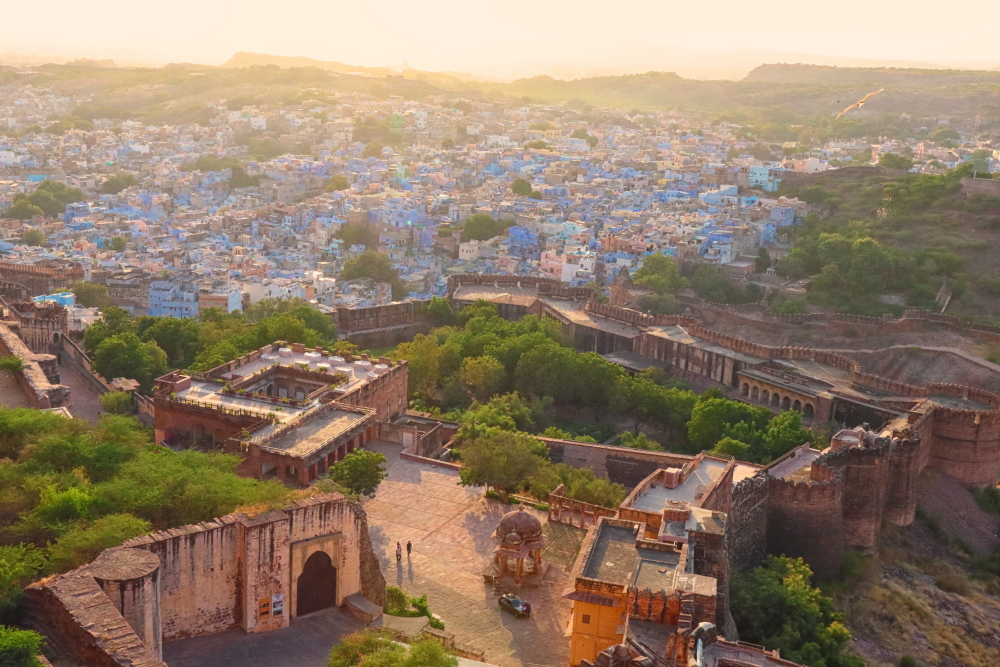
Why Jodhpur is called Blue City?
If you look north from Mehrangarh Fort, you will notice many clusters of houses painted in different shades of blue. These houses stretch over an area of 10 km along the wall of Mehrangarh Fort. This area is the oldest part of the city outside Mehrangarh Fort. The boxy indigo houses became quite popular among the tourists for decades, and Jodhpur emerged as the Blue City of India.
Why The Houses Are Blue?
There are a few theories behind the blueness of the old town in Jodhpur, but even the experienced guides can not agree on the exact underlying cause. Below are the speculations that you may hear from your tour guide –
- The houses were painted blue to keep them cool from the scorching heat of the sun in the Thar Desert. Jodhpur enjoys sunny and bright weather all year round. That is why it is also known as “Sun City”. But honestly, I wonder if this is the reason, then why didn’t they paint white on the exterior.
- There is also an argument that this was done to repel termites. Termites caused much damage to many buildings by munching their way in the walls of dwellings and businesses. To protect their houses, residents started to mix copper sulphate with the usual whitewash they used to coat the walls. This caused the blue hue. Some even say they used Indigo plant extract to colour the houses to protect them from termites. Indigo dye has been used for centuries in most regions in India to colour yarn and fabrics in shades of blue.
- Another theory says the blue colour was used deliberately by the Brahmins to separate themselves from the other castes of society. Indeed, the predominant residents of this part of the town are still Brahmins. That’s why these old blue quarters in Jodhpur are still called Brahmapuri or “Brahmono ki Gali”.
- It is also said that blue refers to God Shiva. According to Hindu mythology, God Shiva became blue when he consumed all the poison (Halahala) that created from the sea when Devas (Deities) and Asuras (Demons) churned it (Samudra Manthana) to obtain Amrita, the nectar of immortality. The Brahmins, who were the original residents of these blue houses, were worshipers of Lord Shiva and painted their houses blue to express their devotion.
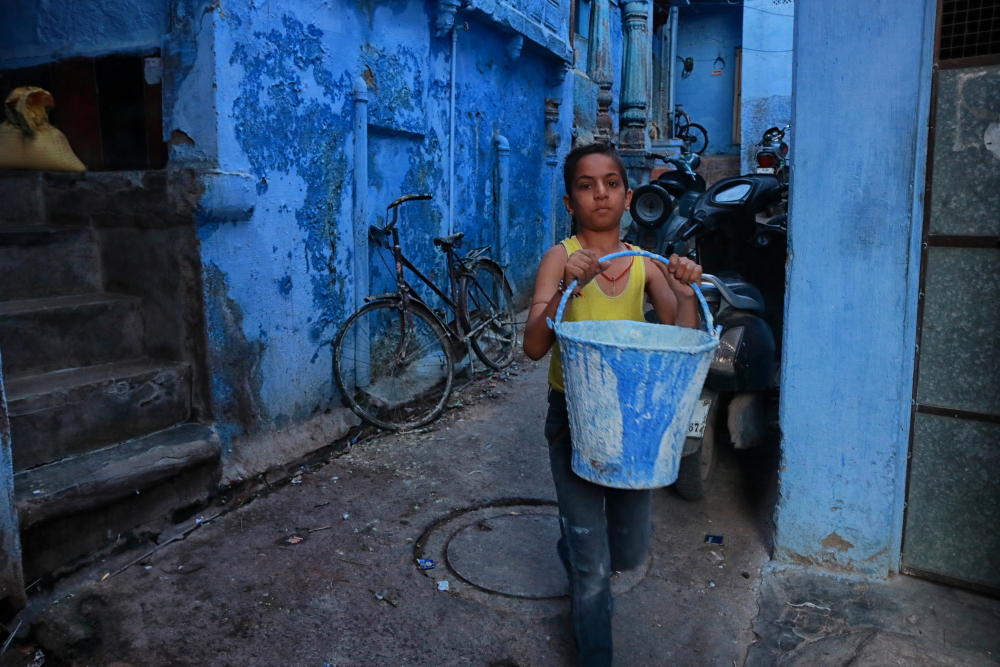
Where to Find Those Blue Houses in Jodhpur?
The blue houses of Jodhpur are clustered in an area called Brahmapuri, which is near Chand Pole, from where you can walk uphill to reach Mehrangarh Fort from the backside. This place is also known as “Brahmono ki Gali“. You should explore nearby “Neem ki Gali” and Navchowkiya, as those places also house several blue quarters.
But honestly, if you plan to go there alone without any guide or a friend who had been there before, you may end up circling the same lanes again and again. So the best way is to ask local about the direction to Chand Pole.
The area beside Chand Pole at the foot of Mehrangarh Fort is called Brahmapuri. After you made a round inside Brahmapuri, ask locals about the direction to Ranisar Lake. You will find enough blue houses on your way. From Ranisar Lake, you can walk towards Navchowkiya and then go to Kapda Bazar and Katla Bazar to explore few old markets and continue walking till Clock Tower.
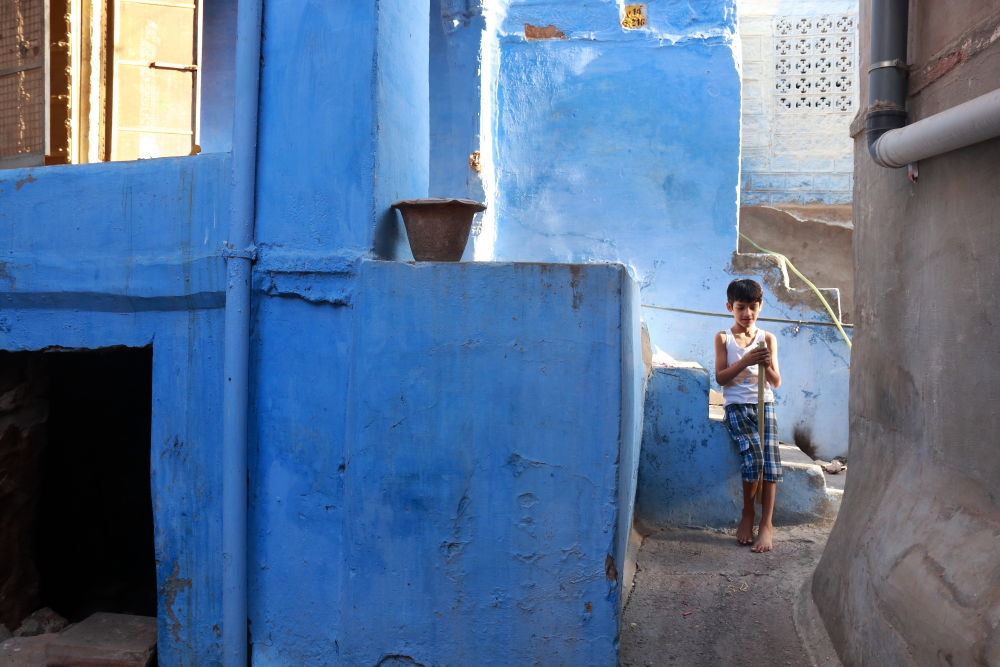


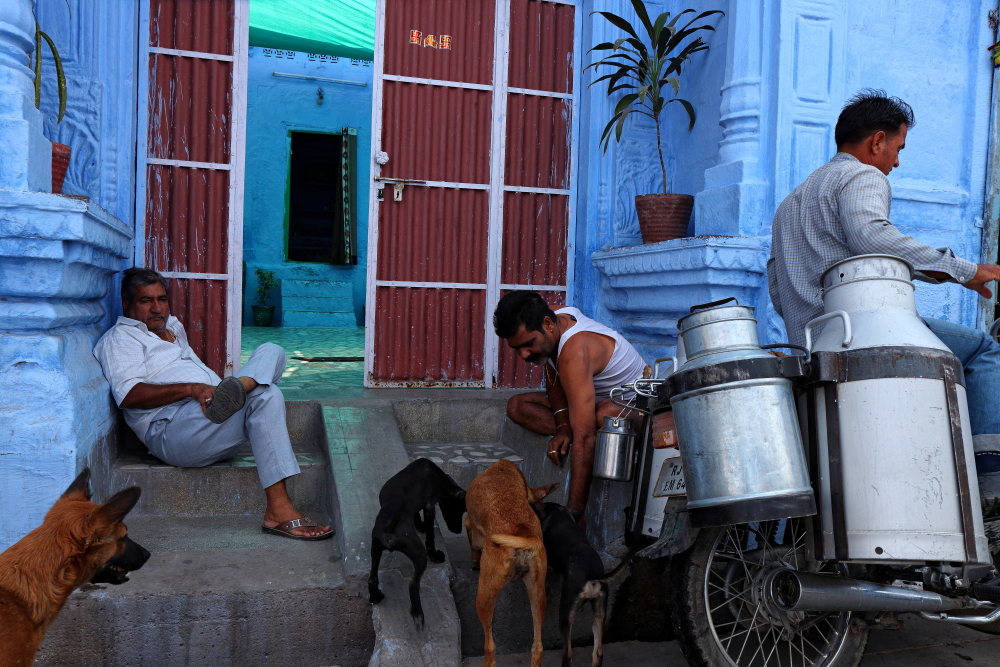
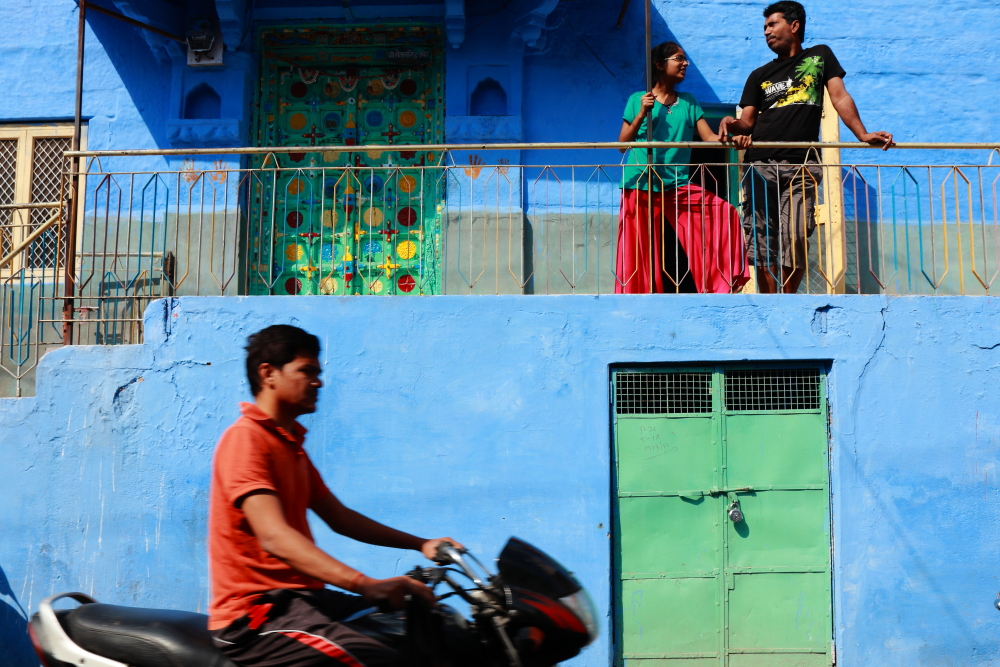
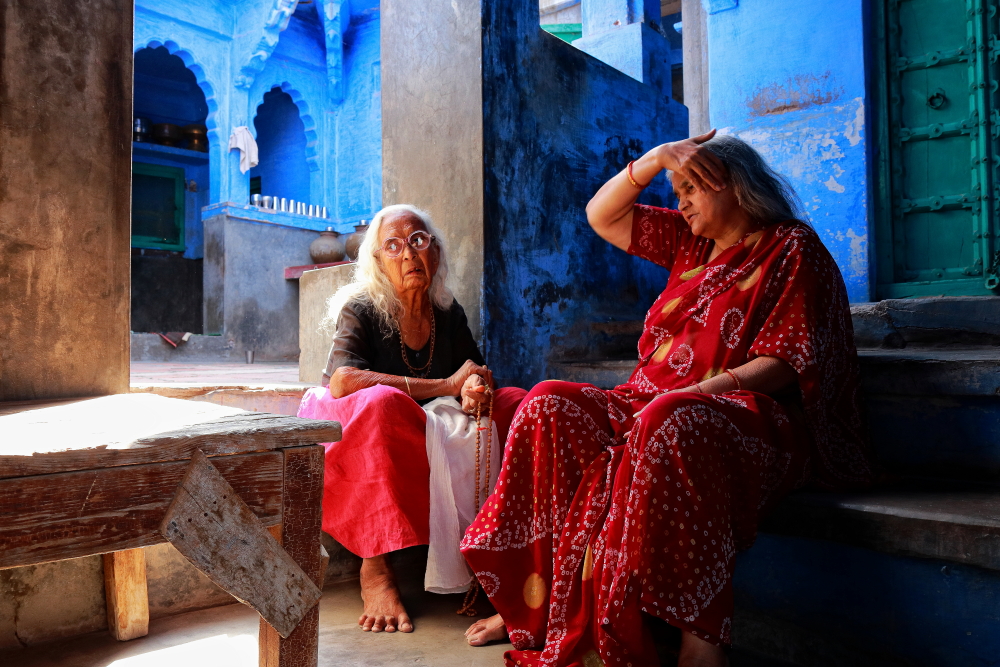
How to Tour The Blue City of Jodhpur?
Several local tour operators can arrange a 2-3 hours tour of the blue mohalla of Jodhpur. Even the hotel or the guest house you are staying in can arrange a tour on request. Or you can opt for a full-day walking tour of Jodhpur, including a tour of Brahmapuri and local markets.
If you stay in one of the guesthouses besides Chand Pole as I did, you are already inside Brahmapuri. Get a direction from a staff of that guest house and explore it all by yourself.
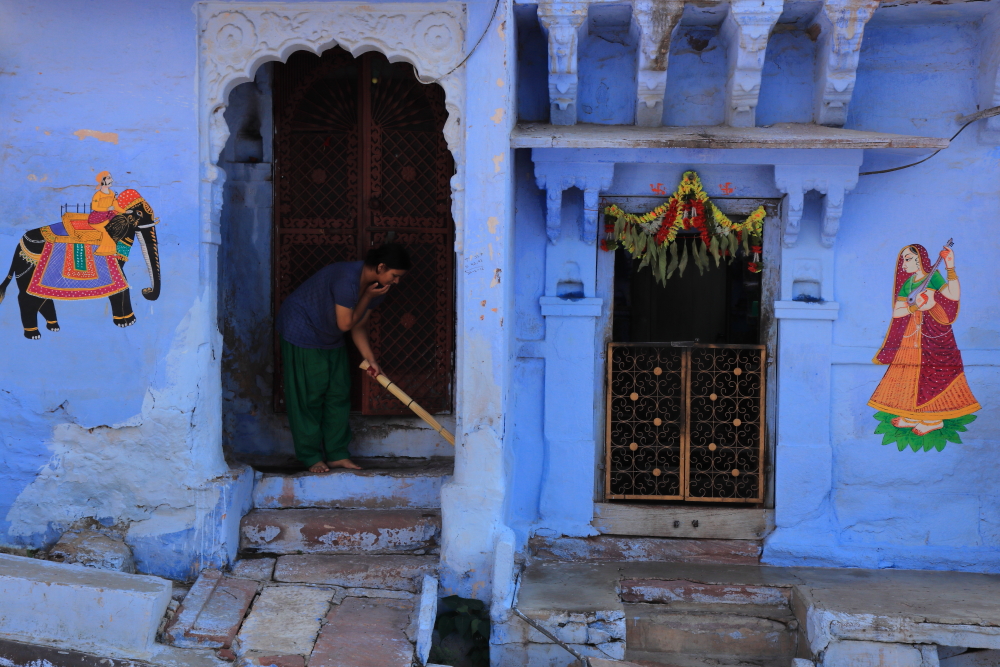
How much Blue is Jodhpur?
If you had been to Chefchaouen and expect Jodhpur to be the same way, then I am afraid you will be disheartened. Jodhpur was not painted blue to attract tourists. Rather the oldest part of the town full of century-old houses mostly painted with shades of blue. Even in Brahmapuri, you will find many houses that are not blue at all.
Blue houses comprise around 30% of the entire town. The white and the off white exteriors are also quite common as it seems most logical to get protected from the heat of the desert. Except for the old town near Brahmapuri and Navchowkiya, blue houses are not visible in other parts of the city. And at times, you may wonder why Jodhpur is called the blue city if you do not visit the old quarters. You will only get an idea when you look at the city from above, and there is no better place other than Mehrangarh Fort for an aerial view.
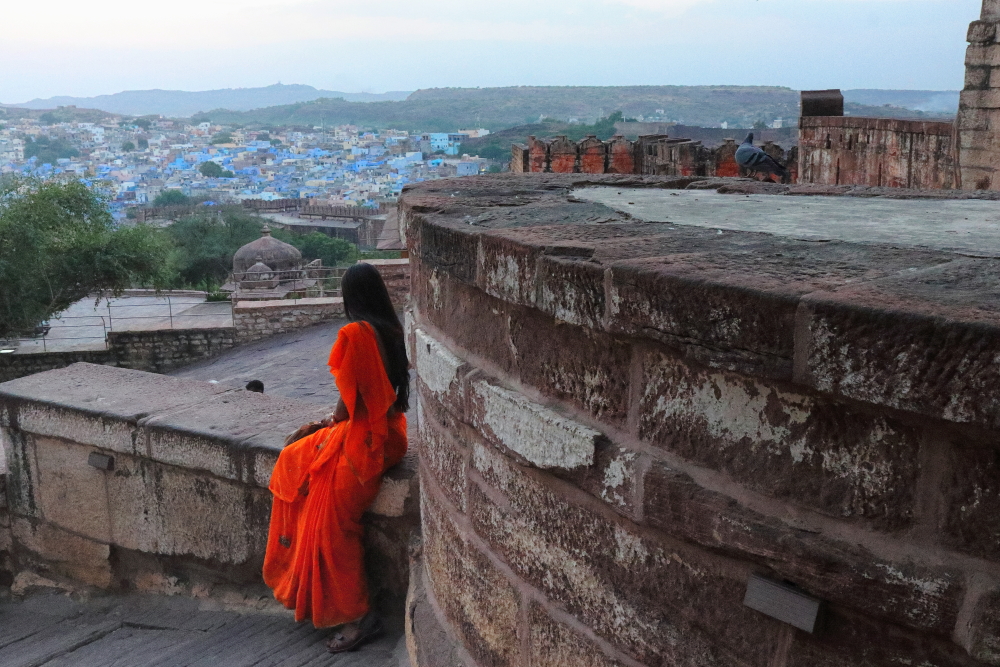
Things in Old Blue Town that Need A Change
No, I am not talking about my defunct camera. I admit that it was a heartbreaking moment for me. But I got my camera repaired, and I made another trip to Rajasthan within a year to compensate for my first tour!! 😉
Yet I was a bit upset about three things –
- Open drainage system
- A lot of littering everywhere
- A gradual decrease in the number of blue houses
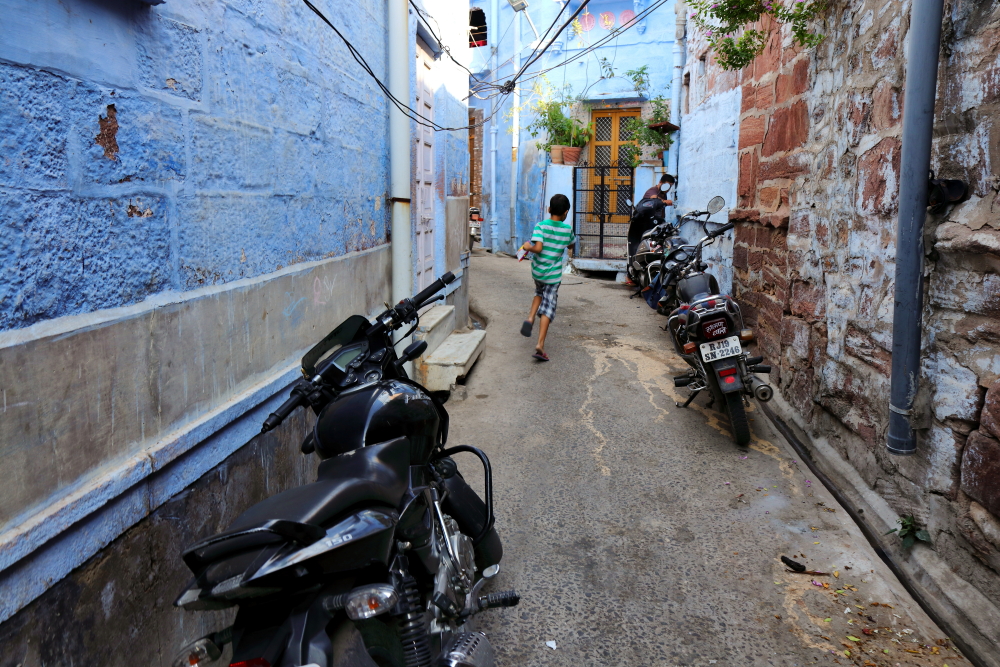
When to Visit The Blue City of Jodhpur?
Except for summer (April to June), you can visit Jodhpur throughout the year. In recent years Jodhpur is experiencing some heavy rainfall during the monsoon. So, the best time to visit Jodhpur would be between October to March.
Where to Stay Inside Blue City of Jodhpur
There are a few guesthouses in the Brahmapuri or Navchowkiya if you are interested in staying inside the old town. I stayed in Raj Mandir Boutique Home Stay, which is within 100 meters from Chand Pole. They organize Blue City Walk Tour on request from guests. Other recommended accommodations are Amar Niwas Guest House, Singhvi’s Haveli, Suraj Haveli.

What to Eat on your Jodhpur Blue City Walk
Your Blue City Walk would be incomplete if you did not taste some local foods. Try some Shahi Samosa, Marwar Kachori, Mirch Bada, Gulab Jamun and Makhaniya Lassi from roadside stalls in Navcowkiya. I can assure you that you will not regret it.
How to Reach Jodhpur?
Jodhpur is 354 km from Jaipur and takes approx. 5 hrs to reach by car. It has an airport that connects to Delhi and Mumbai with direct flights. Jodhpur is also connected with the rest of the country by a rich network of Indian Railways. Direct trains from all metro cities run to Jodhpur.
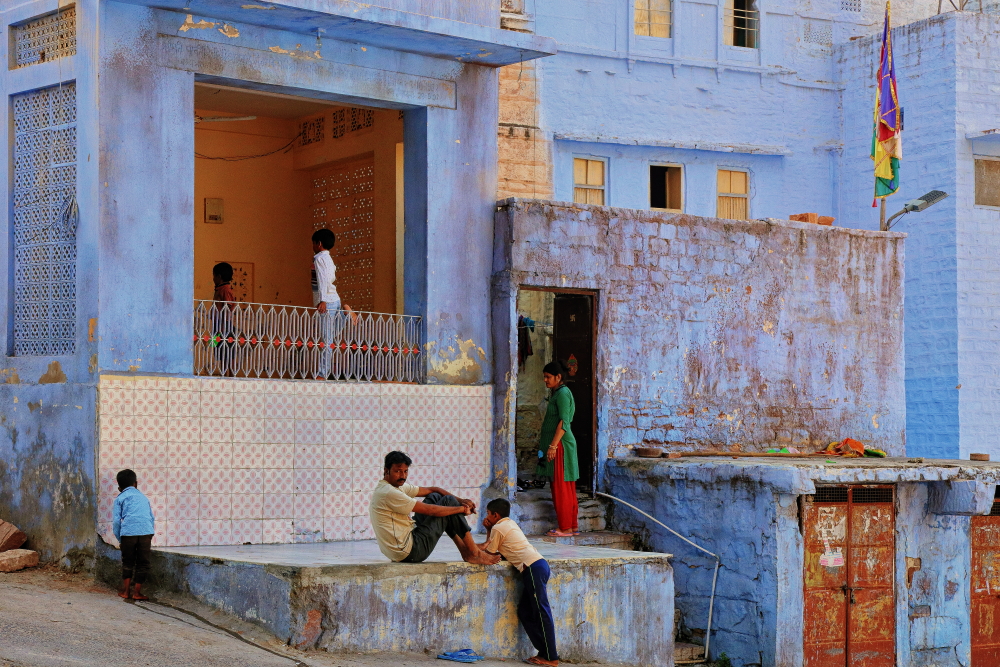
Photography in Blue City of Jodhpur
My Camera Gear
- Camera: Canon 800D
- Lens: Canon EF-S 17-55 mm f/2.8 IS USM
- External Flash: Canon Speedlite 430 EX III-RT
- Tripod: Vanguard MAK S
Photography Tips
- It takes around 2-3 hours to explore the blue quarters in Brahmapuri.
- Locals are friendly. But always take permission before you take a close photo of them. And if you take a candid shot then share the in-camera image with them, you may get an opportunity for a few more close up shots or an invitation inside their houses.
- The best time for photography is in the morning after 9 am.
- Weekends are better if you want to capture some activities inside those by-lanes.
- A wide-angle lens will be your best bet inside those narrow lanes in the blue city of Jodhpur.
Pin the images to read later!!

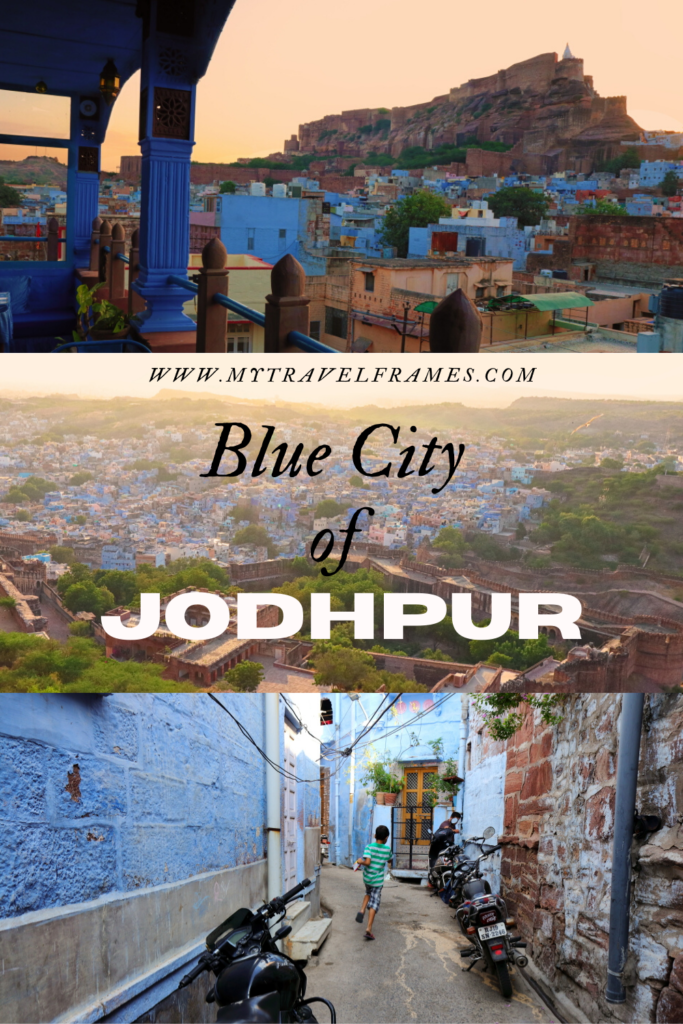
Book your trip: Resources
- Flight
Use Skyscanner or Google Flights to book your flight.
- Accommodation
Tripadvisor and Agoda are perfect for booking your hotel. If you want to stay in a hostel, then Hostelworld would greatly help you find one at your convenience.
- Travel Insurance
World Nomads is perfect for travel insurance. You can get comprehensive protection from them. Let them take care of unexpected situations while you concentrate on your trip.
- Package Tour and Activities
You can book a package tour from G-Adventures and Viator. They are a reputed company arranging small group tours and customising them per your requirements. You can also use Get Your Guide to book your private transport, city tours, heritage walks, food walks and other experiences like a cooking lesson or a Yoga session.
Disclosure: Some of the links below are affiliate links. You will be directed to another third-party website when you click those links. If you purchase anything via those links, I will earn a referral bonus without any extra cost to you.
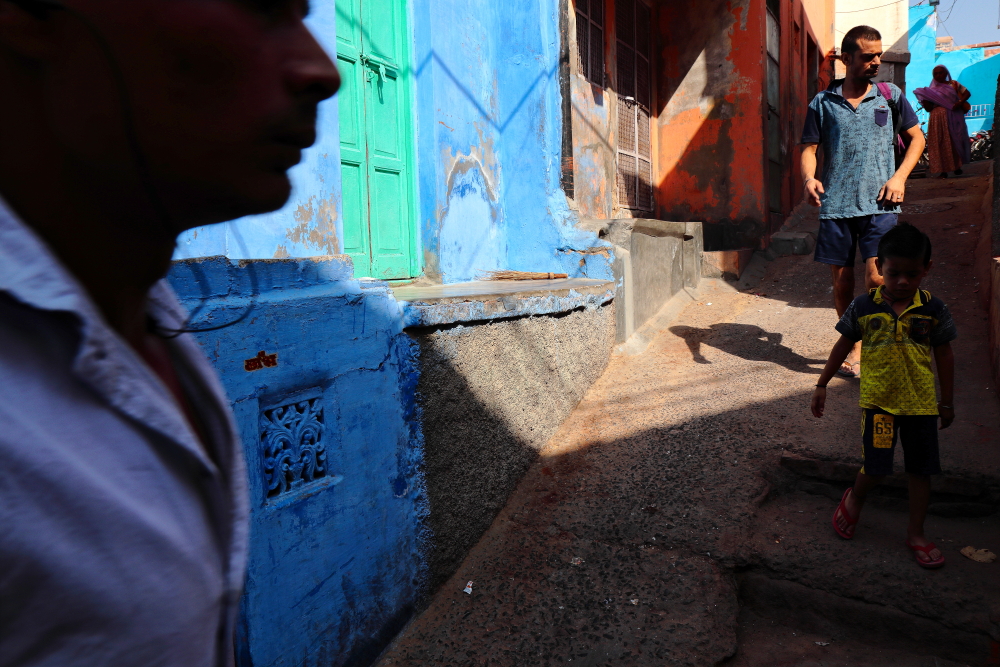
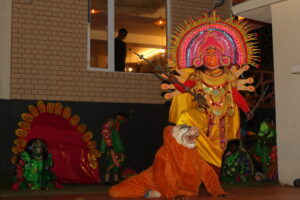
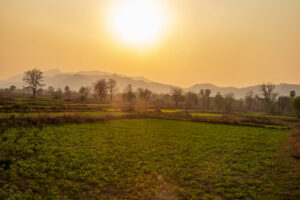
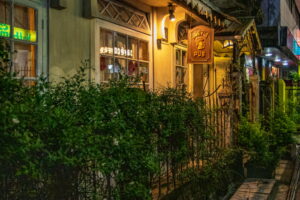
Pingback: Mehrangarh Fort and Museum | A Wonder in the Blue City of Jodhpur, India
Pingback: Welcome to Golden Fort in Jaisalmer - The Last Living Fort of India
Pingback: A Perfect One Day in Jaipur Itinerary - My Travel Frames